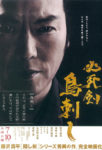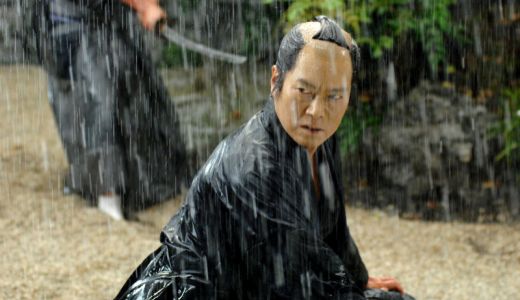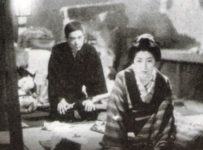 The history of Japanese cinema has long been defined into a number of key genres that reflect the history of Japan itself. Arguably the most famous of these is the jidai-geki, or period dramas, and consist of films largely set in the Edo Period of Japan (1603 – 1868), with samurai cinema such as Rashomon, Yojimbo and Ran being an obvious sub-genre of this. Along with gendai-geki (contemporary dramas) and shomin-geki (realist films such as the works of Yasujiro Ozu). This latest film from director Hideyuki Hirayama manages to draw on several layers of this amazing tradition.
The history of Japanese cinema has long been defined into a number of key genres that reflect the history of Japan itself. Arguably the most famous of these is the jidai-geki, or period dramas, and consist of films largely set in the Edo Period of Japan (1603 – 1868), with samurai cinema such as Rashomon, Yojimbo and Ran being an obvious sub-genre of this. Along with gendai-geki (contemporary dramas) and shomin-geki (realist films such as the works of Yasujiro Ozu). This latest film from director Hideyuki Hirayama manages to draw on several layers of this amazing tradition.
As the film opens, swordsman Kanemi Sanzaemon (Etsushi Toyokawa, 20th Century Boys) stabs and kills the Lady Renko (Megumi Seki), mistress to the Lord Tabu Ukyou (Jun Murakami, All to the Sea). This crime is normally punishable by beheading, yet Sanzaemon is spared. Instead, he is imprisoned in isolation for a year, during which time we learn of the corruption of Renko, and the growing rift that is forming between the Lord and his cousin Hayatonosho Obiya (Koji Kikkawa). When Sanzaemon is released and promoted to chief attendant, things really start to get complicated.
Many commentators have made a big deal of the similarities between this and the films of Yasujiro Ozu (Late Spring). At first glance, I wondered where this comparison could have come from. This is, after all, a film about a brutal murder and an elaborate plot of political intrigue. On closer inspection, the film is only about those things on the surface, and is principally concerned with the spaces in between. There are long scenes where ostensibly nothing happens, but there is always a brooding tension just boiling underneath the surface. Toyokawa epitomises this understated character type, having recently come off the slightly more over-the-top version of the honourable samurai in 20th Century Boys as the “Shogun”. When the tension finally breaks, it is explosive. The film concludes, as it began, with a violent act. However, the final moments of the film are so blood-soaked it is almost as if the very emotional core of the film itself has finally been let loose and embodied in a very skilled and slightly miffed samurai.
Possibly the pinnacle of all samurai storytelling, simply because it draws on all of the influences of Japanese cinema. Sword of Desperation (必死剣 鳥刺し)is simultaneously an impeccable samurai/period film and a quiet shomin-geki film, with the castle serving as a de facto for the family home that characterised Ozu’s films. Even nature is used as an oppressive force, heightening the tension inherent to the situation.
Easily one of my Top 5 films from the 14th Japanese Film Festival, Sword of Desperation is a slow-burning drama-cum-samurai film that should be seen as a classic piece of cinema for generations to come.
Sword of Desperation is playing at the 14th Japanese Film Festival nationally. It is due to play again at Melbourne on 5 December 2010.
DVDBits can be found on Twitter @DVDBits. DVD Bits is at http://www.dvdbits.com.





No Responses